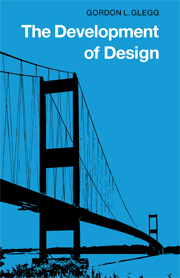6 - Future compatibility
Published online by Cambridge University Press: 07 September 2010
Summary
We have already discussed the necessity for the prototype to be compatible with both the inventive idea and the economics of the market place. But this is not the whole story: the prototype must be compatible with the appropriate technology as well. We have seen how, in most instances, a new invention tends to be ahead of the technology required to exploit it efficiently. The technology has to be invented after the invention.
But there are exceptions, which occur when the invention is, in itself, a new technology. Then, instead of an invention searching for a technology to exploit it, we have a technology sitting around waiting for an invention to pal up with it. We are in the midst of such an era now; the era of the silicon chip and the micro-processor. It is absolutely essential that a prototype must either incorporate or be consciously devised to be compatible with this revolutionary technique. It will change almost everything.
Odd as it may seem, inventors tend to move backwards in their prototype technology rather than forwards. They are possibly out of date in their knowledge of the subject, or else have a subjective feeling that it is ‘playing safe’ to use some traditional device. This is a fallacy for a drawing office should never be an antique shop. But this tendency is not solely a modern failing; it has happened all down the history of engineering.
- Type
- Chapter
- Information
- The Development of Design , pp. 58 - 62Publisher: Cambridge University PressPrint publication year: 1981



